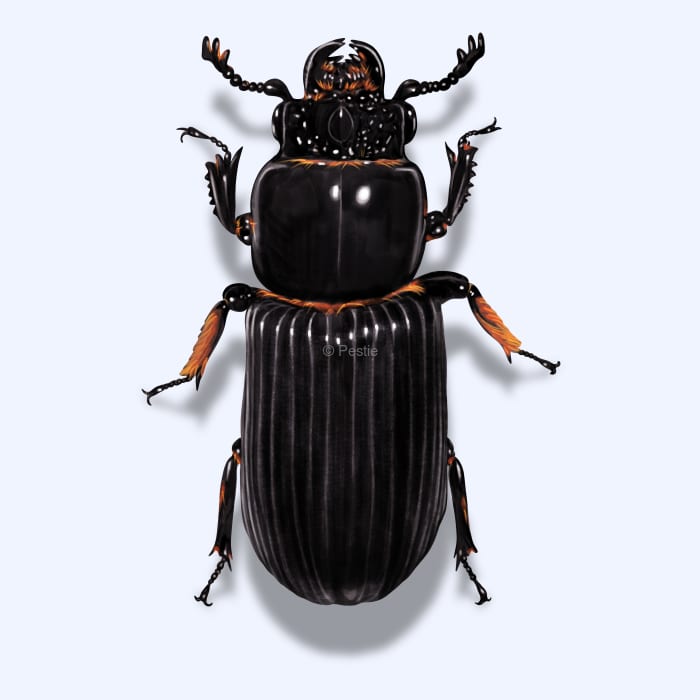How to identify and get rid of leather beetles

The hidden social world of leather beetles
It feels like some insects just want to annoy us and invade our spaces. Others just want to be left alone and hang out with their buddies. That's exactly what the leather beetle had in mind.
These gentle giants, also known as bess beetles or horned passalus beetles, are rather rare and unknown to naturalists and scientists. They tend to live in colonies in rotten wood and even communicate by making rasping sounds. They tend to stay within their log, preferably made of oak or hickory, unless they are looking for a mate or a new log.
While most bess beetles will pair off with a single mate, there are often multiple pairs that live in the same log. They tunnel into the wood, where they will lay their eggs and watch over the larvae. The adults will chew up wood and mix it with feces, which is then regurgitated to the larvae.
How to identify leather beetles
Bess beetles or leather beetles are easy to recognize because of their robust, glossy black bodies and distinctive antennae. They have a single curved horn that is forward facing and tiny golden hairs on the fringes of their body.
The large shield-like structure that covers the head has a solitary groove that divides it into two. The wing covers, on the other hand, have multiple grooves running down them. Here are some common features:
- Glossy, leathery body
- Horn-like projections
- Single groove on the back
- Multiple grooves on wing covers
How big are passalus beetles?
Adult bess beetles can grow to be about 1 to 1.5 inches long.
Where do leather beetles live?
They are found throughout the United States, particularly in areas with abundant woodlands where decaying logs are common. They are rarely found in homes or other structures.
Are leather beetles a pest?
Bess beetles don't bother humans, our pets, or our home. They are a beneficial organism that helps decompose fallen trees and typically doesn't cause damage to healthy structures or live vegetation. Instead, they contribute to nutrient cycling in the ecosystem by breaking down dead wood. If you happen to come across a bess beetle, consider yourself lucky. They are pretty rare to find, but if you find one, look again; there's a good chance you might find a few others, too.
Treat leather beetles with Pestie
If you're still having trouble keeping leather beetles away, the best option is to use a pro-grade, effective pest control solution like Pestie.
Pestie is a do-it-yourself pest control solution that's specially designed to keep leather beetles and other pests away from your home.
With Pestie, you can rest easy knowing that your living space is protected and free of creepy crawlies. And the best part? It's designed for people, pets, and the planet, so you can say goodbye to harsh chemicals and hello to peace of mind!
- Save hundreds compared to traditional annual pest plans
- People, pet, and planet-friendly
- Pro-grade customized formulas
Quick facts
- Scientific name
Odontotaenius Disjunctus
- Other common names
Patent-Leather Beetles, Horned Passalus
- Colors
Glossy black
- Life span
2+ years
- Diet
Decaying wood
How dangerous are Leather Beetles?
Low danger risk
No, bess beetles are gentle and don't bite or sting.
Males can sometimes fight each other to gain access to females. They will use their curved horn to flip over the other rival male.








